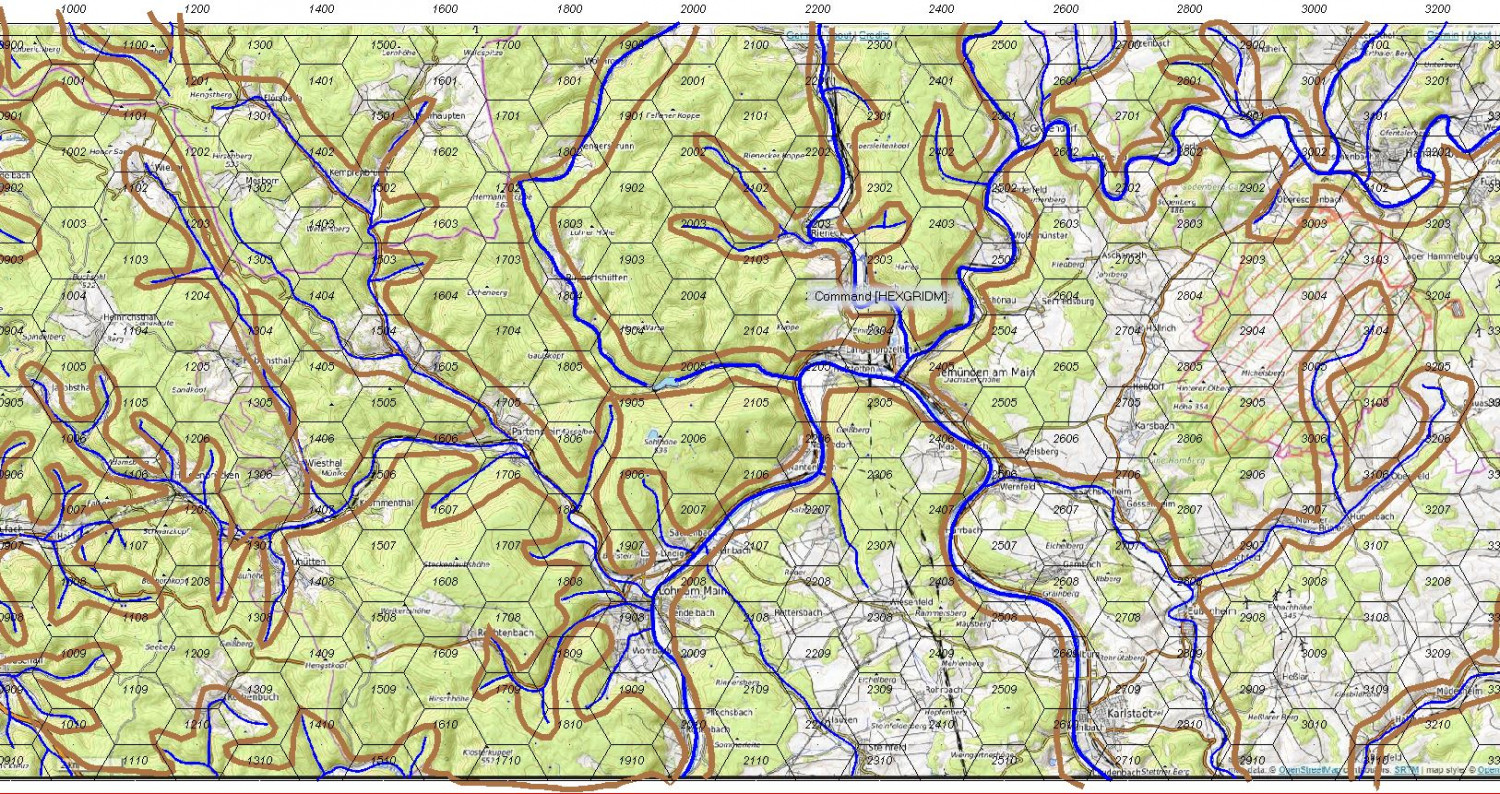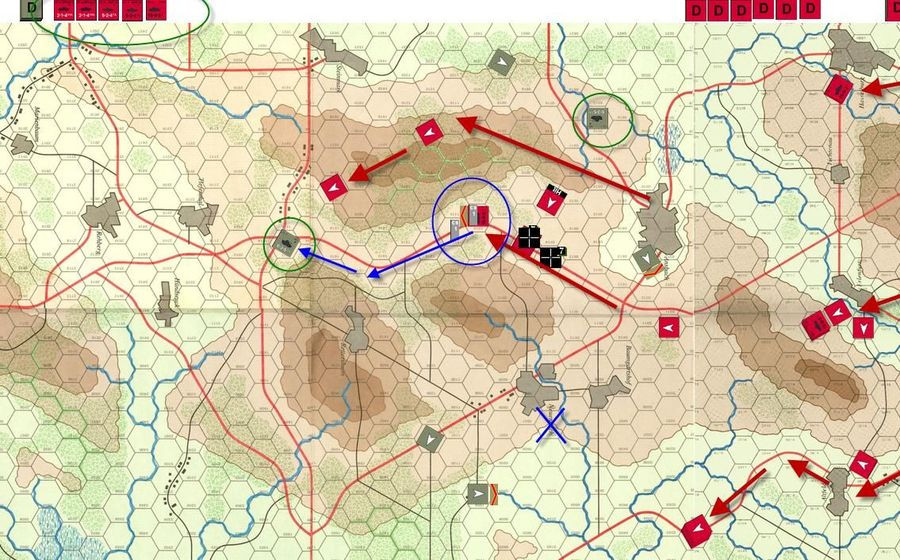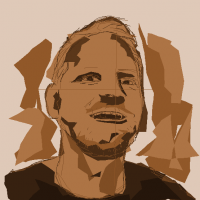New Map
 mike robel
🖼️ 15 images Surveyor
mike robel
🖼️ 15 images Surveyor
After a long while, I am working on a new map. This is for a sci-fi game and is based on the WWII Raid to Hammelburg to rescue US prisoners by the 4th Armor Division's Task Force Baum, one of whose elements was C/37th Armor which I commanded many years later. C/37 was also the unit which led the breakthrough into Bastogne (and I have a photo of me and the company commander shaking hands at the break-in point on the 35th anniversery of the battle) as well as in the battle around Arracourt, France. C/37 was destroyed during the raid and pretty well beat up at Arracourt.
The map stretches from Mannheim to Hammelburg and is about 68 km wide and 20 km tall. Each hex is 2km.
I am trying to be less anal (or maybe more relaxed) and not trying to make this a copy of a topographic map, particularly with my slavish devotion to contour lines or following river/road routes.
The first photo is of the map as a whole. I have laid in the roads and the watercourses to get a view of the terrain compartmentalization.
A frequent method of adjusting the terrain is to move roads so they generally flow from hex center to hex center and watercourses so they move along the hex edge. However, I really cannot bear to do that, so I pretty much follow those and then adjust them so there is some precision as to which hex a road/watercourse lays in. You can see some areas where this needs to be addressed in the 2nd picture.
The third picture is the rub. Here I have turned off the roads, but left watercourses and then tried to define the terrain compartments. Where I have trouble is how to decide how to place and space contour lines so they generally follow the real terrain, if that makes sense.
What I am trying to avoid is the typical geomorphic terrain as defined in the last picture. This seems to lack the 'flavor and feel' of the real terrain to me. The hexes in this map are 250 meters, not that it really matters.
My terrain sketching skills suck to say the least. My platoon and company fire plans always looked like they were drawn by a kid who failed lines, coloring, and penmanship in kindergarten which they did. Thankfully, my children inherited their artistic skills from their mother and perhaps mine, which is fortunate for them. :)
Anyway, any suggestions for how to approach the map? Maybe I am reduced to something like the last picture where I just add contours to the compartments without using the real map as such a base?










Comments
This is quite different to your older work, but it looks easier to play a game on - like a board game.
Sue, to be clear, the bottom picture is not my work. <edit> I sort of want to be in between the last picture and my regular style. For myself, I'd be happy with just the hex grid over the topographic map. I'd be comfortable in playing that with someone with military map reading experience.
I like the top pictures the best.
We've had this discussion before Mike, I fear. The reality is that most people playing board wargames aren't in the military and most never will have been, so the actual real-world map (which itself is only an abstraction of the reality anyway, of course) isn't going to be of significance for players of the game at all. Indeed for many, it will be hopelessly confusing.
The reason the last map style you showed is used so heavily in many published hex-wargame boards is it allows the game to flow easily, with players being able to immediately identify what is where, and how best to plan what they intend to try. While I can understand this brushes-up sharply against your sensibilities as a real-world field commander, this isn't how most players will think. While a field commander can look over a topographic map with trained eyes and identify the same things the abstracted game map shows clearly, hardly any game players will have that capability, which is naturally why the game map needs to so abstracted in the first place.
I think perhaps the way to approach this is to identify what the key terrain elements are that you want to reproduce in the game, bearing in mind what the capabilities are for the science-fiction forces you'll be using. For instance, if there are many units with hovercraft/GEV abilities, open ground, rivers, lakes and marshes are going to have almost no game effect for them, whereas rough ground, woods, heavily-built-up areas and steep slopes will (crude examples, but hopefully you see my point). Once you know that, you'll have a better idea what level of abstraction will work for what you need, I think.
Wyvern,
Yeah. I got that. I am, as I said, trying to be less anal. It's Hammer's Slammers. I somehow would like to get in between the bottom map and my usual style. I am having trouble visualizing how to do it. I will continue to ponder.
Hammer's Slammers is a good set of stories.
Well, the very top picture is the map from a German web site. I will post it later so you can examine it in detail. The other ones represent my pitiful attempt to attempt to break from my worship of contour lines.
@mike robel
I learned topo map reading in Scouts, but probably not close to the extent you did.
This is the sight I get the maps from. I take screen shots to piece the map together. If you ever watched Hogan's heros, Stalag XVIII was near Hammelburg, but was largely used, in the TV series, for US Army Airforce Prisoners. The real one held POWs from North Africa and Europe.
@JimP : Once you know how to read it, you just get better. Some people have a hard time understanding them. Just like I have a hard time understanding art. My typical comment in college when asked for my interpretation of a book or art item was, "Rollicking Good Book" or "Nice Picture."
I changed the map so now it will be 12 x 54 inches long and each hex will be about 1 km (at the moment). I also trimmed it and rotated it so N is to the upper right. This improved the resolution so I can see the watercourses better as well as the contours to guide me. Still need to break it up into terrain compartments and decide how to proceed. Aschaffenberg at lower left, Hammelburg at upper right. The actual training area is the slanted red lines. In WWII it was the German Anti-Tank School. The TF had the misfortune to assemble on a tank range so the Germans had very precise ranges from known firing points. When I was there it was the I think it was the Infantry School (84-87).
After thinking about this more, I have determined a possible solution.
I am making a map with the Overland Hex style and fitting the hexes to the contours as best as I can (about 100 m contour intervals on the real map, I can make them anything I want when I finish). You can see a beginning here. I cringe every time I place the hex on the map. Each hex is 250 meters while the game hexes will be 1000 meters (about 1 inch).
Here's a close up of the central area.
After I finish the 'hex map" I'll turn off the snap grid and small hexes and draw contour lines based on the various hex groups, then add the roads and rivers, etc. I think this will get me a 'style' in between a 'pure hex' map and a "contour map" and reduce the polygon count. Perhaps I'll draw the contours with the fractal polygons then smooth them so they don't look too regular.
This idea helps me with this map, but doesn't do me much good toward figuring out how to do the geomorphic map, but one step at a time.
That's a different way of doing things, but very tidy if the purpose of the map is to have a clean layout for a game.